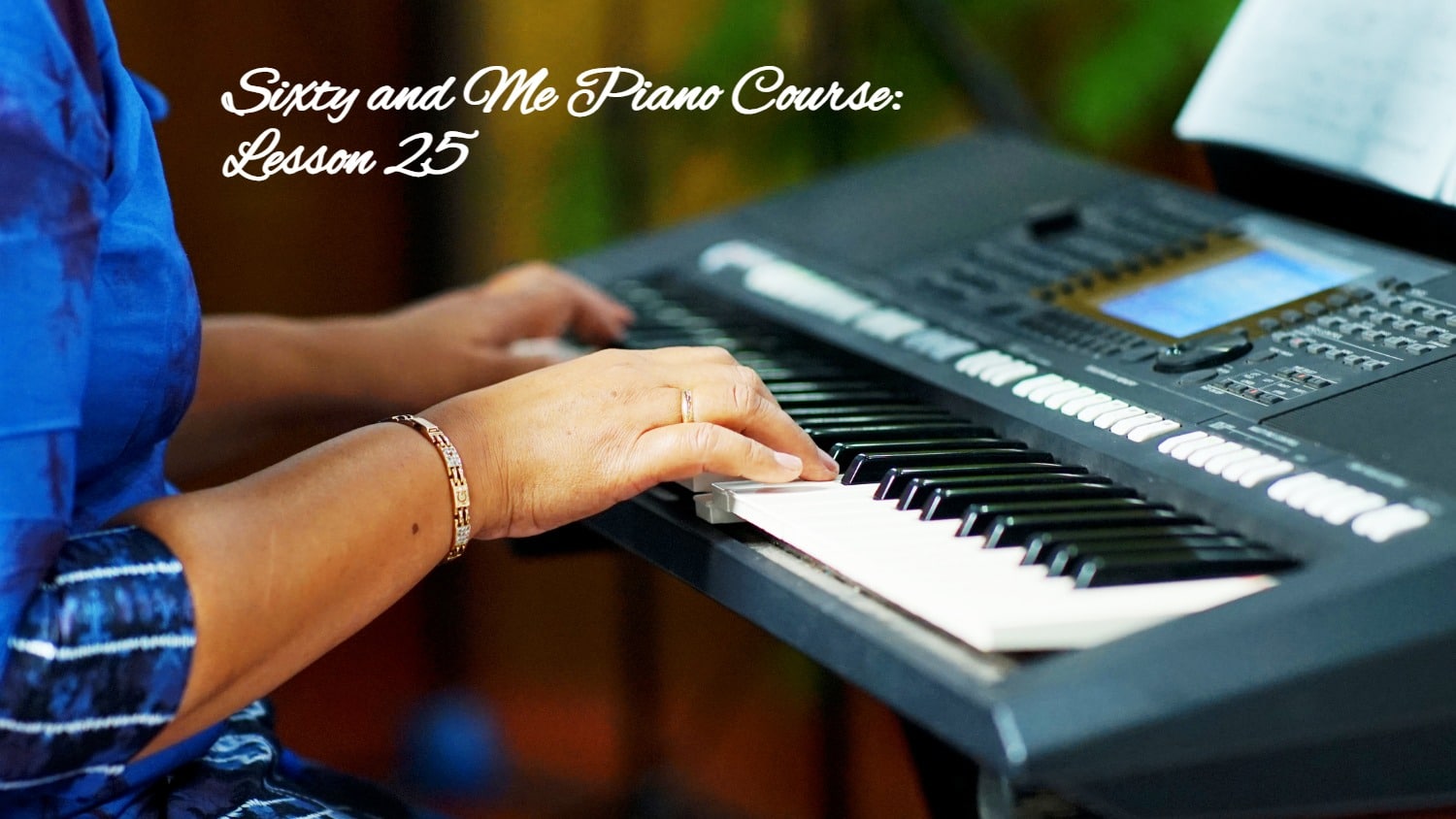
Piano Lesson 32: The Cool Chord Possibilities of Playing from Fake Books!
Welcome to Lesson 32! Today we are going to work on improving our note reading skills and will learn to use chord symbols in order to play from Fake Books! Let’s do it!
[NOTE: If you are just joining us for the first time, you can find my previous Sixty and Me Free Piano Lessons on my Author page. You can join our lessons any time and move at your own pace!]
32.1 Playing The Three Sailor Boys Using Chord Symbols
In your Chord Calisthenics you have been seeing chord symbols above the staff or the boxed chords. Now we are going to start using those chord symbols to play chords in your left hand. We learn to read chord symbols so that eventually you can play songs in what we call “Fake Books.”
Fake Books are collections of songs that display a treble staff melody (and lyrics) with chord symbols written above the staff. There are no bass notes. The piano player just uses the chord symbols to play chords with the left hand.
Fake Books are fun to use if you don’t always want to read bass notes, or prefer to play your own left-hand rhythms. I believe it is good to be able to both read bass notes and read chord symbols so that you can play all genres of classical music, beautiful arrangements of popular music with left and right hand notes, plus you can play popular songs from Fake Books.
Once you can read chord symbols for major, minor, diminished and augmented (plus a few more chords coming in Upper Hands Piano books 2-3) you will be able to play thousands of popular songs quickly and easily.
32.2 The Three Sailor Boys Demonstration Video, p.82
Try playing The Three Sailor Boys just reading the melody and chord symbols! Notice my left hand moves down to the G chord, so that I don’t run into my right hand. I discussed this in my video 32.1 above.
32.3 – Note Reading Drill p.81
This week you will be finishing the Note Reading Drill on p.81. These are random notes to help you improve your note reading skills. Be sure to play these lines a few times before watching the video.
Passion Practice
- Exercise #2 (Appendix iii) in D and A, with hands together.
- p.82 – We are playing The Three Sailor Boys again, this time with full left-hand chords and chord symbols!
- p.81 If you already played the 1st two lines of p.81 that’s great, just play the 3rd and 4th lines this week. If you haven’t started p.81 yet, play all 4 lines in the next 2 weeks. I provided a demonstration in video 32.3 above, but try playing these random notes a few times before watching the video. They are purposefully not melodic in order to give you optimal reading practice without your ear helping you. Don’t worry about your fingering, use any fingers.
- Chord Calisthenics #2 – Play these major triads in all 12 keys with hands together, forward and backward. Give extra practice to the chords you didn’t remember automatically. Try playing all 12 triads by just looking at the chord symbols above!
- Review the left-hand song on p.64. If you haven’t already written lyrics for the song, do so now! Remember, your lyrics don’t have to be great or even make sense. Just jump in and have some fun with it.
Let’s Have a Conversation:
Have you ever heard of or used Fake Books before? Some musicians prefer them because they can play the chords the way they want to. But others prefer to play written bass notes. Would you like to try some Fake Book type arrangements? You will have several opportunities to try Fake Book arrangements in the Upper Hands Piano pages to follow, as well as regular Grand Staff (Treble + Bass) arrangements. Leave a comment and let us know how your piano playing is going!
Tags Piano Lessons







Thank you for the suggestion of using Fake Books. I was unsure if they were good practice or not. In fact I thought perhaps they might hinder learning to play the bass by eye. I’m going to try the books and see how it goes. Thanks SO much for the insight and additional direction in learning piano. I’m seriously excited by all the possibilities. Thank you, thank you! All of your videos are extremely helpful.